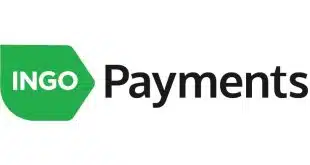For ATM owners struggling to attract consumer traffic, half a loaf of surcharge revenue may be better than none at all. A new program called Dollar$top from processor Fidelity National Information Services Inc.’s (FIS’s) NYCE electronic funds transfer network will put the concept of a limited fee to the test with a $1 surcharge, less than half the average surcharge on U.S. ATMs.
NYCE, however, is betting that participating retail ATM owners will find that they come out ahead by attracting consumers who otherwise would seek out an ATM owned by their own financial institution, where they won’t be assessed a surcharge, or an ATM in a surcharge-free network. And while they’re giving up some market-rate surcharge revenues, ATMs in the Dollar$top program will generate $1.40 in interchange per withdrawal transaction versus NYCE’s normal rate of 50 cents. In contrast to purchase transactions, when they receive interchange, debit card issuers pay interchange to the ATM owner.
Payment Alliance International Inc., manager of the nation’s largest retail ATM network with some 60,000 machines, is NYCE’s first client. Louisville, Ky.-based PAI will offer the service to its more than 200 partner ATM independent sales organizations and retailer ATM owners. Individual owners make the decision about whether to participate. NYCE plans to approach more retail ATM owners.
NYCE developed the program in response to calls from its 3,000 financial-institution members, most of which have less than $10 billion in assets, to get more ATM firepower as they compete with money-center and large regional banks that have hundreds or even thousands of ATMs. NYCE also serves the 500-member Armed Forces Financial Network (AFFN). “One of the things we would be regularly asked is, 'What are you going to do for us about reach?’” says NYCE Payments Network president Neil Marcous. “We need more machines to be competitive, but these surcharges have gone through the roof.’”
Small and mid-size banks’ customers often would pay $2.50 or $3.00 when they used another bank or credit union’s ATM unless their own financial institution participated in a surcharge-free network. But, according to Marcous, the costs for reimbursing ATM owners in surcharge-free networks is going up. In some cases, the financial institution might reimburse an ATM owner $3.00 for a surcharge on top of the 50 cents in interchange. Small financial institutions “were absorbing fees, it was really cutting into their profitability,” he says.
Thus was born the idea for Dollar$top, which presents both ATM owners and financial institutions with a balancing act. ATM owners need to decide whether taking only $1 in surcharge revenue but getting 90 cents more in interchange while possibly drawing more customers is worth the tradeoff of reduced upfront surcharge revenue. Financial institutions need to decide whether paying higher interchange and persuading consumers to pay a flat $1 instead of searching out a surcharge-free ATM will be financially rewarding.
Marcous is confident that many banks and credit unions will conclude the program will produce positive returns. He says NYCE research involving several thousand consumers about the elasticity of demand for ATM services, which he admits was not based on random samples, nonetheless produced evidence that many consumers would use an ATM with only a $1 surcharge if they knew they would avoid a surcharge of $2.50 or more. “If it was $1, they were willing to pay that,” he says.
NYCE says the program will protect the surcharge revenue of its member financial institutions. In fact, only retail (off-premise) machines are allowed.
About 20,000 ATMs are enrolled in the early going, with more coming, according to Marcous, and he expects that about 1,000 of NYCE’s 3,500 eligible financial-institution members will participate as the program gets under way. “It works out for the FI, the ATM owner, and the consumer,” he says. “This will be satisfactory to a large group … it won't satisfy everybody.”
PAI executive vice president and chief operating officer Greg Sahrmann likewise says each ATM owner needs to look at its own financials before deciding whether to participate in Dollar$top, but PAI believes it will “draw traffic to their locations, not necessarily to all of them, but to a significant number.” About 30,000 of PAI’s ATMs have surcharges is the low $2 range, though some are higher, he adds.
ATM consultant Sam M. Ditzion, president and chief executive of Boston-based Tremont Capital Group Inc., says that if the program works as planned, it will attract new traffic to ATMs rather than cannibalizing existing transactions. “It’s all kind of incremental gravy, if you will,” he says. “Driving incremental transactions is every ATM deployer’s goal.”







